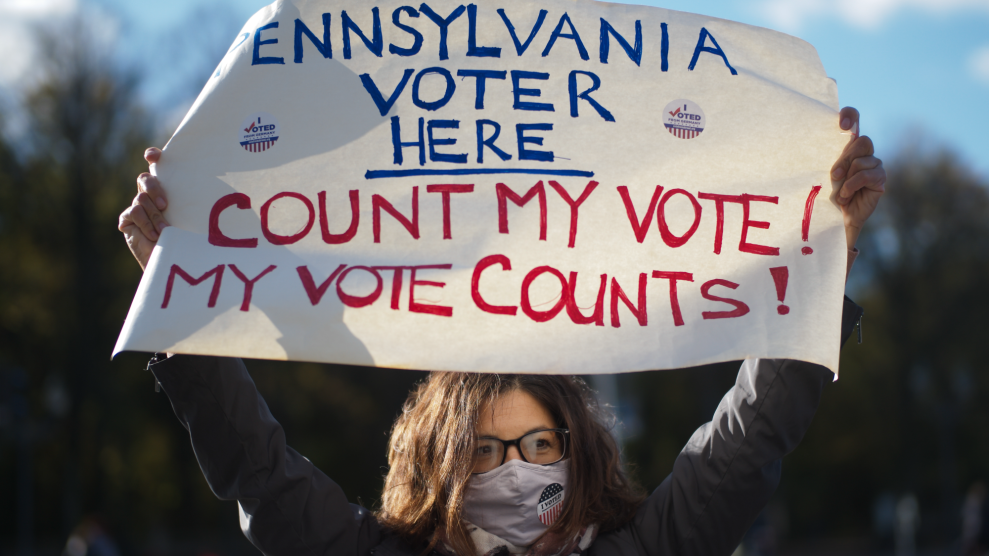
Mother Jones Illustration; Getty
Earlier this month, the New York Times published an article about the least pressing issue arising from the legalization of marijuana: Dogs are getting stoned.
That might strike you as strange, since humans do not get high from eating raw weed. The cannabinoid receptors in our brains respond to cannabis only after its THCA has been heated and converted to THC in a process called decarboxylation. Dogs, however, have more cannabinoid receptors and can get high from uncooked cannabis.
The article doesn’t mention that, but it does say that dogs are scrounging around for discarded roaches and breaking into their owners’ stashes, which is making them very sick. After a few anecdotes, the writer offers advice on how to detect and treat a stoned dog. (As with marijuana intoxication in humans, it’s unlikely to cause any long-term health problems. If your dog gets high, you can wait it out or, if needed, call the vet.)
I think the spread of legal marijuana has prompted too many questions about what it means for dogs. There was another example this month: Minnesota State Sen. John Jasinski (R) spoke at length about how weed should remain illegal so that we can keep expensive weed-sniffing police dogs out of retirement. Is it really worth imprisoning people over a substance that’s safer than alcohol just so police departments can save a few thousand bucks instead of purchasing dogs that don’t sniff for weed?
But the bigger problem I had with the piece—beyond the weird fixation on dogs’ health in relation to marijuana legalization—is the suggestion of causation: Because weed was legalized, dogs are getting high.
The article includes this baffling assurance:
There are no precise figures about the number of dogs picking it up on the street, but the data show they are getting sick from weed more often in places where recreational use is legal.
If there are no precise figures, how can the data show anything?
Trend pieces in major newspapers swear by this faulty logic, collapsing correlation into causation. Each time, the paper notes the facts: We do not have data to show this thing we think is happening. Then, it continues: It seems like this thing is happening, so here’s an article.
Here is the “but” from an article on women allegedly not returning to the subway in New York City:
The M.T.A. doesn’t track ridership by gender, so it is unclear whether women have abandoned the transit system in greater numbers or have been slower to return than men. Many women have returned to the subway, either by preference or necessity; many never left.
But interviews with a dozen women, community leaders and transportation experts suggested that an uptick in subway crime during the pandemic has only deepened a longstanding wariness that is second nature for some women on public transit.
Here it is again, disguised as an “although,” regarding teen sadness and cellphone use:
Dr. Victor Fornari, the vice chair of child and adolescent psychiatry for Northwell Health, New York’s largest health system, noted that the drop in teen well-being coincided with the rise of smartphones. Although the technology’s full impact on adolescents’ mental health is still unknown, he said, there is “no question” of an association between the use of social media and the dramatic increase in suicidal behavior and depressive mood.
This might seem silly when the Times writes about Fido getting fried; no rational reader would conclude that we shouldn’t legalize pot. But in general, that trend piece tick—I don’t have the evidence, but…—is how you can keep the facts in place and still tell a lie.
I found the stoned dog piece especially annoying because there is a six-year-old article on the same topic in the Times that attempts to incorporate some data, albeit haphazardly. The writer called up the ASPCA (or A.S.P.C.A., in Times parlance), who said that pet marijuana overdose calls increased by 144 percent between 2010 and 2015. Without raw numbers, though, this doesn’t mean much. Perhaps there were 50 cases in 2010 and 122 in 2015—we have no idea. Furthermore, the cause of the jump is unclear. California had the second highest number of reports, after New York. Weed has been legal for medical use in California since 1996 and in New York since 2014. California is by far the most populous state; New York is the fourth. Whether any of this means anything is anyone’s guess.
I’m not saying that it’s not sad and uncomfortable when Buddy starts wobbling around with his tongue hanging out of his mouth. But might I suggest that we stop attempting to shoehorn a suggestion of an unproven policy-related causation into every trend piece? Consider teaching your dog to drop it—then drop it.














